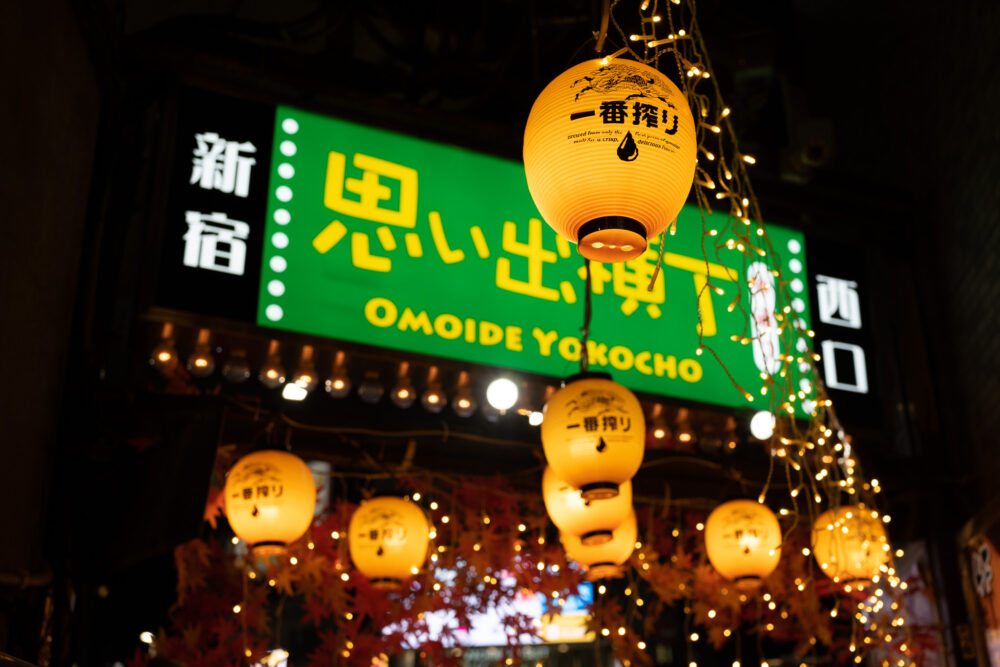This post may contain affiliate links. This just means I may receive a small commission at no extra cost to you for helping them promote their product or service. I don’t endorse any services I don’t personally use or recommend.
Japan is widely known as the most expensive destination in Asia. I’m not going to contest that fact, but I am going to show you how to save LOTS of money on your next trip. Because Japan is one of those places that everyone wants to visit. A bucketlist destination if you will. While it wasn’t cheap, it was also not nearly as expensive as we had originally thought. And with these tips for visiting Japan on a budget, it can even be a rather affordable destination open to exploration by all kinds of travelers.
This list isn’t going to include any Workaway or long-term travel tips for those staying months in the country. Instead, it’s going to focus on actionable easy budget-saving tips that people on a short trip can use to save bigtime in Japan.
15 Tips For Visiting Japan On a Budget
Transportation is by far the most expensive cost for travelers in Japan. We’re gonna start with ways that you can save while hopping from destination to destination in the country.
1. The big question: Japan Rail Pass or no Japan Rail Pass?
I actually wrote an entire post detailing my decision NOT to buy the Japan Rail Pass for $370 per person. The low-down is that we saved about $100 each by purchasing bullet train tickets on our own. We didn’t have to do an immense amount of research either. We just turned up and bought tickets.

Check out my full post to see everywhere we went so you can compare your itinerary and make sure that buying the Japan Rail Pass isn’t right for you.
2. Get Unreserved Train Seats.
When you’re purchasing your Shinkansen (Bullet Train) tickets be sure to specify that you want unreserved seats. This means you’ll be sitting somewhere in cars 1-6 and left to choose your own spot. These are much cheaper. If you’re traveling as a duo you’ll most likely still be able to find seats next to one another.
3. Choose buses.
Buses are cheaper than trains & astronomically cheaper than bullet trains. If time isn’t a constraint for you (or if you can plan for these travel days) choose at least a few buses to save hundreds of dollars.
4. USE the Metro!
I probably don’t need to tell you that Japan has impressively clean, well-connected metro and train lines in each major city so you’ll never need to use a taxi. You can reach every single destination by metro, bus, or walking. I promise. In slightly smaller cities biking is a great way to get around and is very popular among Japanese people.
Keep in mind that most metro stations (and all buses) require cash to purchase tickets.
5. Skip the SIM.
Everyone told us you need a SIM card to travel in Japan. But honestly, we found Japan super easy to travel without one. There’s free wifi everywhere (buses, trains, some towns) and maps.me has accurate metro info for offline use. All kiosks for restaurants and metro use had English language options and for the few menus that didn’t— use can download Google translate offline.
6. Book your accommodation ahead of time.

Budget-friendly places fill up first. Unfortunately, Japan is one of those countries where planning ahead is going to save you lots of money. Our guesthouses and hostels were all booked on Booking.com and Hostelworld.com for anywhere from $7.50-$23 per person. Hakone and the areas around Mt Fuji are the most expensive regions while Osaka had a $15 private room (not a great one but hey, what can you expect).
You’ll probably need to book at least a month ahead for the high season.
7. Where you stay in Tokyo matters.
Tokyo is huge. Sprawling. But luckily there are lots of interconnected metros including one circular JR line that rings the best part of the city. We stayed in Nippori. This is in the far northeastern part of the city. Most of the places we wanted to see were located in the West and Southwest. This meant lots of metro trips, most 40 minutes or more.
If you plan to stay less than 4-5 days in Tokyo, instead of simply choosing the cheapest place to stay, look for a conveniently located neighborhood. Otherwise, you’ll spend a lot of time and money on the metro.
Consider the 24-hour Tokyo Pass (cost: 800 yen) on days you’ll do LOTS of sightseeing in various neighborhoods. You can purchase it at all the major metro stations.
8. Don’t visit ANYWHERE on a weekend.
Obviously, you have to do something on a weekend. Make sure it’s Tokyo, Osaka, or another major city. Tourist cities like Hiroshima, Kyoto, Magome, Hakone, and more are absolutely flooded with local tourists. I mean A LOT of tourists. It’s kind of insane. You’ll have to wait in incredible lines. Plan accordingly.

9. Kyoto is all about picking and choosing.
To keep Kyoto budget-friendly you can’t see everything. Many Buddhist temples in the city charge an $8-$15 entrance fee. This is probably to combat overtourism in an area that sees an incredible amount of visitors. We found that the free shrines were often the best because they saw fewer people and it wasn’t just massive crowds jostling for a photo op. Shoren-in Temple even has a tea ceremony that’s authentic for half the price of typical touristy tea ceremonies. I wrote about how to attend it here.
I recommend making a list of a few attractions and sticking to those rather than trying to see everything. These are our favorite things in Kyoto.
- Bike to the Bamboo forest just out of town early in the morning.
- Hike to the top of Fushimi Inari Taisha, not just a quick photo op visit.


If you’re looking to splurge on food in Kyoto, and it’s got some excellent options, definitely pay Teppan Tavern and La Bac a Sable a visit. Teppan Tavern serves Wagyu A5, traditional Kyoto bites, and homemade Umeshu (plum wine) that’s better than anywhere else for dinner. Seriously, this is the highlight of Japanese hospitality and it won’t break the bank. We spent $40 on a full meal with a few drinks. The French bakery is the perfect lunch pick-me-up.
10. 7/11, Family Mart, and Lawsons.
These are convenience stores scattered all over Japan. They have the cheapest beer and chu-hi, the cheapest coffee, and a wide array of Japanese snacks and desserts. But the best part is the bento boxes and hot food. You might be put off by the sushi, pizza or curry stuffed bao, habanero chicken strips, and tonkatsu meals but they are actually excellent and good quality! It’s a very popular stop for commuting Japanese residents. Keep in mind that hot food is usually restocked just before popular meal times.


In my professional opinion, the best food goes to Family Mart— but the best coffee goes to Lawsons.
Most restaurants don’t open until 10-11 AM and few hostels offer breakfast which leaves you out of luck. But these stores are a great cheap option for breakfast. Or late night meal. Or lunch.
11. Another cheap meal option? Conveyor belt sushi.
These places are the best. And they happen to be the most budget-friendly restaurants for great traditional Japanese sushi. You can typically get 10 plates between $8-15 depending on the items you select. This is a great way to familiarize yourself with sushi menus and sample new things too without having to commit to a whole set.

Unlike South Korea, a country we visited just before Japan, it’s very easy to order one dish and share. In Korea, you often pay by the person for popular meals like Korean BBQ. A major pain in the wallet for budget travelers looking to sample a lot of different items. Japan, fortunately, does not follow this rule and it’s quite easy to share several small plates for cheap.
13. Buy food for your Magome excursion.
I wrote an entire post detailing everything you need to know about hiking from Magome to Tsumago. I highly recommend this trip but since all restaurants close by 5 PM and I found most to be overpriced in the area— be sure to buy your own food from a Family Mart before you head to the mountains. Don’t forget trail snacks!

14. Beer is the most expensive alcohol in Japan.
Skip the beer and instead opt for Japanese Whisky highballs, Plum Wine, Shochu, and sake for cheaper drinking options.
15. Choose Omoide Yokocho over Golden Gai for a night out.
If you are looking for Tokyo drinking hot spots and nightlife, Omoide Yokocho is cheaper and more authentic than the late-night Golden Gai district. In Golden Gai, the drinks aren’t as strong and you’ll often have to pay a cover to even sit at the bar. It was still worth wandering through the alleys of each but I much preferred Omoide for dinner and a night of drinking.

How much did we spend in Japan on a Budget?
Let’s look at a quick budget breakdown of what we spent while visiting the country. Keep in mind, we only took trains and bullet trains because we had a short amount of time. We also didn’t know many of the above tips beforehand and would have booked our Magome accommodation much further in advance. So basically, I think you could save hundreds by following our tips above.
How much we spent in total for 19 days for two people: $2,687.55
How much we spent per day per person: $70.72 per day per person!!!
I hope this information helps you feel more confident to visit Japan on a budget and save lots of money while you do so! This was our most expensive trip BY FAR and with these tips, we could have easily cut costs by hundreds of dollars. Let me know in the comments if you think you have any Japan budget travel tips to add to my list.
Save This Post For Later!







1 Comment
Roger
April 17, 2024 at 9:18 amYou suggested to hike to the top of Fushimi Inari Taisha. While I agree hiking up is really cool, I was underwhelmed because there really aren’t any great views so doing the entire top loop felt a waste. I did it at night which was totally cool, but eerie. You could hear but not see the monkeys in the trees.